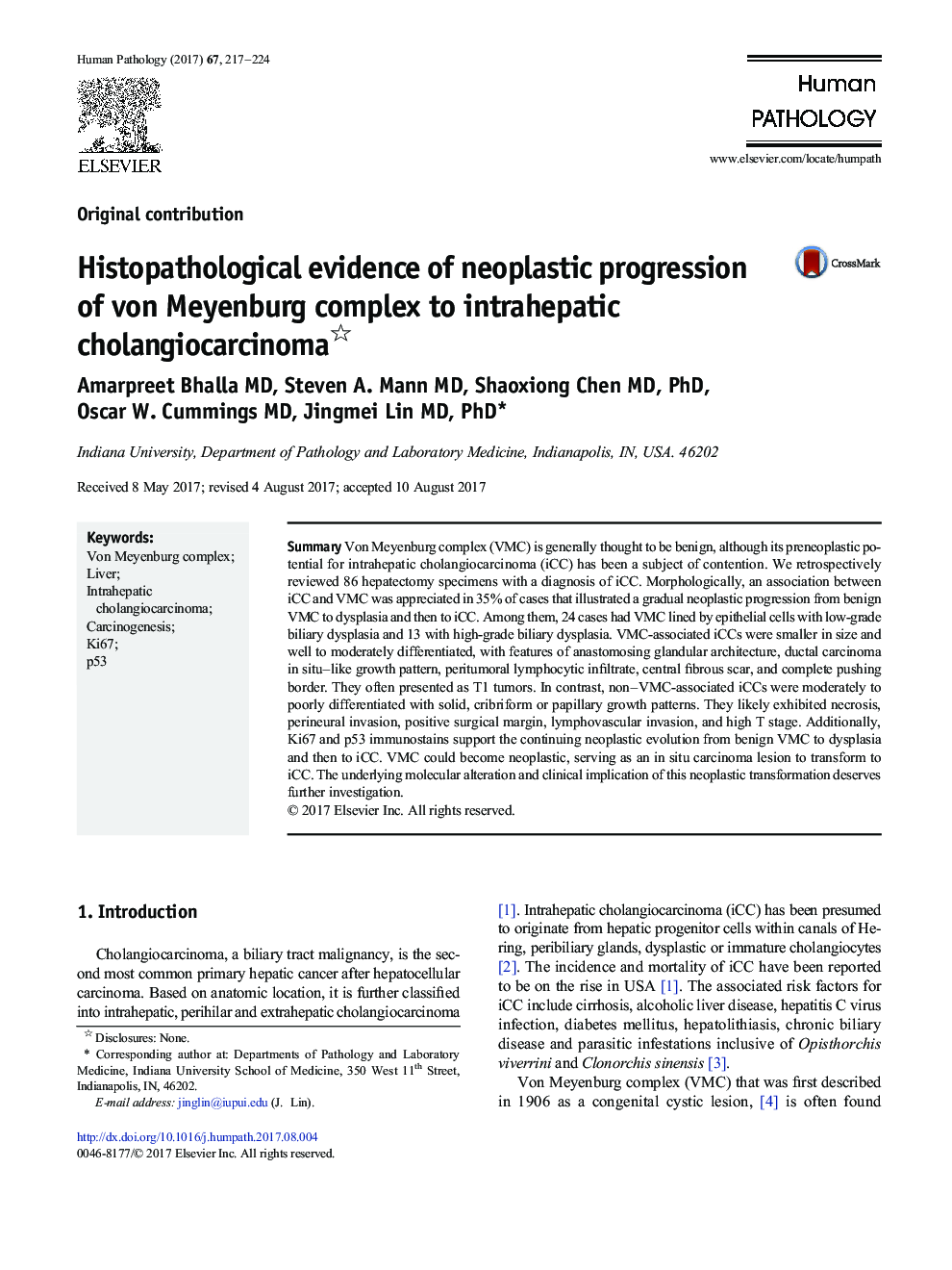| کد مقاله | کد نشریه | سال انتشار | مقاله انگلیسی | نسخه تمام متن |
|---|---|---|---|---|
| 5716252 | 1606643 | 2017 | 8 صفحه PDF | دانلود رایگان |
- 86 hepatectomy specimens were reviewed with an emphasis on the preneoplastic nature of Von Meyenburg complex (VMC) and intrahepatic cholangiocarcinoma (iCC).
- VMC-associated iCCs were smaller in size and well to moderately differentiated with features of anastomosing glandular architecture, ductal carcinoma in situ-like growth pattern, peritumoral lymphocytic infiltrate, central fibrous scar, and complete pushing border.
- VMC could become neoplastic, serving as an in situ carcinoma lesion to transform to iCC.
SummaryVon Meyenburg complex (VMC) is generally thought to be benign, although its preneoplastic potential for intrahepatic cholangiocarcinoma (iCC) has been a subject of contention. We retrospectively reviewed 86 hepatectomy specimens with a diagnosis of iCC. Morphologically, an association between iCC and VMC was appreciated in 35% of cases that illustrated a gradual neoplastic progression from benign VMC to dysplasia and then to iCC. Among them, 24 cases had VMC lined by epithelial cells with low-grade biliary dysplasia and 13 with high-grade biliary dysplasia. VMC-associated iCCs were smaller in size and well to moderately differentiated, with features of anastomosing glandular architecture, ductal carcinoma in situ-like growth pattern, peritumoral lymphocytic infiltrate, central fibrous scar, and complete pushing border. They often presented as T1 tumors. In contrast, non-VMC-associated iCCs were moderately to poorly differentiated with solid, cribriform or papillary growth patterns. They likely exhibited necrosis, perineural invasion, positive surgical margin, lymphovascular invasion, and high T stage. Additionally, Ki67 and p53 immunostains support the continuing neoplastic evolution from benign VMC to dysplasia and then to iCC. VMC could become neoplastic, serving as an in situ carcinoma lesion to transform to iCC. The underlying molecular alteration and clinical implication of this neoplastic transformation deserves further investigation.
Journal: Human Pathology - Volume 67, September 2017, Pages 217-224
